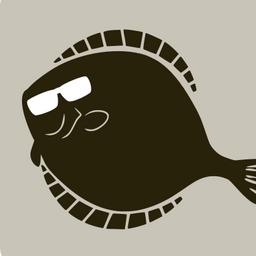tilthat: TIL a philosophy riddle from 1688 was recently solved. If a man born blind can feel the differences between shapes such as spheres and cubes, could he, if given the ability, distinguish those objects by sight alone? In 2003 five people had their sight restored though surgery, and, no they could not.
nentuaby: I love when apparently Deep questions turn out to have clear empirical answers.
This reminds me of the Kiki/Bouba effect with congenitally blind individuals (blind from birth).
Basically, sight is needed for people to associate the sharp shape with Kiki and the rounded shape with Bouba. People that are blind from birth don’t really make this association, but after they gain sight they do!
There is something in our brains that links sound, the feel of a shape, and the visuals of a shape the same way for almost everyone, but it needs to actually experience them first to make the connection.
Well that Kiki/Bouba link was a fascinating little rabbit hole you sent me down. I really enjoyed it. Thanks!
There’s no need to be snobbish about “apparantly Deep questions” like they were idiots. They genuinely didn’t know - that’s why it was an interesting question
deleted by creator
… they really can’t connect spacial awareness from touch to sight? Really?
I mean, apparently. The brain is so weird, it’s really really difficult to even imagine what it’s like to experience certain things that other people do. For example, sometimes people have their corpus callosum (the membrane between the hemispheres that allows them to communicate with each other) severed to prevent certain types of seizures, and afterwards they lose the ability to see “green men” as faces.
For reference, this is what a “green man” is:
https://acc-cdn.azureedge.net/mrlnop420media/0005503_green-man-wall-plaque.jpegCan you, who easily sees the face, really even understand what it would feel like to look at that image and not see a face?
way more basic: Is the brown I am seeing the same brown you are seeing? Nobody knows.
I had a conversation about this decades ago and it stuck with me. It’s bothered me all this time. I have to believe our color perception is at least close if, biologically, we have rods and cones that operate in the same way, and brain structures that work the same. (To keep it simple I’m not considering colorblindness).
What I find really fascinating is some higher level things that I didn’t realize were different between people.
Some people see things in their mind’s eye and those with aphantasia struggle to do so if at all.
Some can envision and manipulate things in 3d and some have a harder time with this.
Some people like me with ADHD have what is called time blindness, “difficulties with tasks related to time, such as estimating how long an activity will take, sticking to schedules, and recognizing when it’s appropriate to start or finish tasks.” (Healthline.com). My perception of time is … limited but it is hard to describe exactly what I’m missing because I don’t know what it is like to be normal.
I’m sure there are other examples as well.
Some people have an inner monologue, like they hear a voice narrating their thoughts. I dont have that. I have aphantasia too but apparently there is no relation no matter how weird I think both groups are.
Ah right. That was the one I was forgetting. I’m often talking in my head to think unless I’m thinking visually.
If I may, how does your thinking work?
I’m not so much narrating my thoughts as using words to think things. E.g. in my head I say, “how do they do that? I have to have words to express the thoughts”
Or another example: when I am typing I am basically “dictating”, but by speaking inside my head and typing what I “say”.
Are you able to just …conjure concepts and ideas without words, somehow?
There really is no good parable to describe my thought process. It’s abstract. I’m often quicker to conclusions than my peers so there’s that. If I had to look at pictures and read an audio book along the way it would be slower.
I can think about a painting, but it doesn’t appear in my head other than I’m thinking about the facts about it. I know that The Scream by Munch is a ghostly figure holding his head screaming and walking on a… bridge? That is just remembered stuff about it that I pulled from my thoughts and memories. I don’t know the color theme, direction he’s walking or other details. I can probably spot the real one in a comparison with a similar painting so it’s stored somehow, I just can’t access it as is. I can’t draw for shit.
I can think about a page of a paper that I’m going to write. I can form the concepts, rules, theme, paragraphs and flow of it and have it all done in my head before I start writing. Then I type it down at 100 wpm until the page is full. At no point did I hear anyone narrating or think about what any of the words would look like when printed out. It was all abstract until I started thinking about how to put it on paper.
So fascinating.
I really wished I could write like that. Probably because of poor working memory (thanks ADHD) I can’t hold that much stuff in my head prior to writing. Certainly not a bunch of raw wordless concept blobs (or whatever?) plus flow an form and all that. Jeez. I invariably write things as I go. I might have a vague sense of what I want to write. Certainly nothing “done” before writing.
I can “see” a rough approximation of The Scream in my head. Enough to draw an inaccurate copy. I can draw other stuff (cars, bicycles, cats whatever) by visualizing them to greater or lesser degrees.
My kid has aphantasia and described it like you did. Remembering facts about it but not so much the actual image itself. Interestingly she is quite good at drawing.
Based on my life experience being like mild-moderate red-green color blind, I think everyone else sees the same colors except me :(
They say this but we have the color wheel. It is trivial to find clothing that goes together, or colors that can invoke a mood. If we really did have alternative experiences I cant imagine it wouldn’t have been qualified, understood, and addressed by marketing already.
Orange and blue means action
https://yesimadesigner.com/wp-content/uploads/2018/06/9-768x1139.jpg
https://www.femalefirst.co.uk/image-library/port/1000/f/fantastic-four-group-poster.jpg
http://ayay.co.uk/movies/poster/superhero/daredevil-elektra-teaser.jpg
https://comic-cons.xyz/wp-content/uploads/marvel-cinematic-universe-captain-marvel-movie-poster.jpg
Looking at it with the concept of mathematical equivalence in mind, the behavior can be almost the same yet internal representation can still be wildly different
You are just making a statement that has no connection to what I wrote. Human beings have preferred color combinations. Address this first.
1+1 = 2
2/2+2/2 = 2
Sqrt(2+2) = 2
The internal experience can be very different despite having outwards similar expressions like shared preferences.
Why the differences would cancel out wouldn’t necessarily be easy to explain, and sure it implies big differences are rare, but it’s not impossible. Especially because we already know of many existing biological differences which still produce similar outcomes (in part due to redundancies) like in chemical balances and protein expressions, very commonly seen in differences in the gastric system
Do you have evidence from neurology that this is happening?
Those are cultural associations though, not biological
Are they? I am sure you must have seen art forms from centuries ago from cultures very alien to your own and were still moved. But even if it was cultural you would still have to wonder why no one is catering to that culture. If a segment of the population really did see colors differently wouldn’t someone make stuff for them to get that market?
Just look at how associations between color and genders differ between cultures and change over time. Those differences absolutely exists, you’re just not seeing it because you’re not the target audience
You mean one time?
deleted by creator
Fair, as long as it is fast action. You wouldn’t want to have to make 3 movies of people walking.
I am skeptical that colors universally bring about moods or concepts. One would have to prove this is true despite cultural conditioning that ascribes meaning to different colors.
I also doubt that each person experiences colors in a significantly unique way. Unless we can show that the receptors in our retinas, or the neurons receiving those signals, behave differently from person to person. I have to wonder if widely appealing art (that uses color) could even exist if we didn’t share the underlying mechanisms of seeing and reacting to its colors.
Very well. How do we account for the associations we all have? Who sat you down and told you that distant colors should invoke excitement? That vibrant colors were fun to look at? That judges almost universally in cultures separated in time and geography should wear black or that red would be popular with people one rank below the boss? Or that cool light means focus and warm light means relax?
I just find this whole idea that it is just cultural to be indirect contradictuon to what I have seen. Especially when I am thinking about all those traditional artforms. People a thousand years before I was born making stainglass, or murals, or painted pagodas that are still amazing to look at despite the vast differences in cultures between me and the artist.
I also don’t recall the conversation when I was a kid in trailer park in the Appalachian Mountains when my parents say me down and said “remember to feel a sense of awe and dread if you ever see a 1200 year old Buddha statue wearing a white/gray robe popular among Indian Royality from that time”. Pretty sure I would remember that conversation and it also wouldn’t have been a gut reaction.
I didn’t say I was opposed to the idea or that I was discounting it out of hand. I simply said I was skeptical (unwilling to believe something just because someone says so) and mentioned a way to think through it scientifically. Then You kind of bombarded me with a lot of claims and anecdotes… Eek. Hold your fire lol
Those are all compelling things you list and it piques my curiosity further. But these things aren’t rock solid evidence. Sure it’s possible. But not very convincing. We can do better. So yeah, I’m curious to tease out what color associations are learned versus hardwired.
“What you have seen” never makes for unassailable evidence on its own. That’s because you, like every other one of us humans, is affected by myriad cognitive biases that can skew your conclusions. (Which is how we got superstitions and old wives tales)
Also, it almost sounds like your argument is that the only way for these associations to occur is through being taught directly and explicitly. But there are other ways to learn things. Kids pick up on all kinds of unspoken things. When going, they often look to their parents for their reaction to some things. They learn a considerable amount of language without being explicitly taught. Musical associations happen without explicit teaching and that definitely varies by culture.
One can just seek evidence to support their conclusion and ignore all the other possible causes or counter examples or whatever else.
For example, cool light (by this you mean light on the blue end) means focus and warm light (on the red end) means relax. Hardwiring is one explanation. But simple learned associations could be another.
Assuming it is true, perhaps orange / yellow / red tints make us relaxed because of associations with sunsets and candlelight. Or something along those lines. Would humana who grew up with a star producing a different light spectrum have a different interpretation? Can people be trained with different associations?
The premise itself has to be tested as well. Is it truly Universal across many cultures? How many cultures have you proven this to hold for? And how did you prove it? By asking? Or by sound experiments? Were those experiments duplicated by others?
Oh also you are unlikely to remember much of anything prior to the age of 3 (give or take). So maybe your parents did have those conversations but at a very young age.
Maybe studies have been done about a lot of these things. I would be curious to see them. But now I’m tired and need to turn my brain off.
I’ve thought about this my entire life. Just generally, is what and how I see the same as you? It’s obviously a matter of how an individual’s brain interprets something, so we won’t know until we can plant our consciousness in someone else a la Black Mirror.
Even that won’t work. Pretend we’ve figured out how to that. How do we calibrate it? What if I transfer my memories into your mind, but you see the sun as “blue”, and so on in my memories? What if you recall a memory where I’m laughing and smiling, but the emotion I’m recalling is what you would call “sadness”?
Either our subjective understanding of reality differs, or the machine doesn’t work right. The machine faces the same issue as our language does when it comes to reliability of translating internal states.
I guess the same could be said about any of the senses. Taste, Sound, Touch, smell.
What does that even really mean though?
Does red look red to you? It looks red to me. What does a difference in perception really mean at the end of the day?
I think yes. Light is a wavelength, so whatever colours we are seeing are in ratio to one another. There might be some perpetual variation due to the quality of our eyes - but red orange and yellow are next to each other on the spectrum.
Nobody will see that any differently.
Unless your eyes are the ones converting the wavelengths, then it still is not sure to be the same with everyone.
We could flip the colour spectrum and all the colours that should be next to one another still are.
Can you, who easily sees the face, really even understand what it would feel like to look at that image and not see a face?
I keep tryin but it’s lookin at me and it’s distracting
deleted by creator
i think i can understand it by proxy, there are numerous optical illusions where your perception of something flips back and forth (like the duck-rabbit) and i’ve experienced seeing (and hearing) things that others laugh at or find interesting and it took me several days for it to finally click in the brain and from then on i couldn’t unsee it again.
deleted by creator
Yes, I can imagine it. You might see just eyes, a nose, and a mouth. Plus some leaves. Like an abstract Picasso or something.
Pretty sure the issue is they dont see the nose or mouth as a nose or mouth. Just lumpy lines in the leaves.
Its like looking at a picasso, and knowing you are looking at a picasso, but all you see is a pollock.
There is a part of the brain that handles recognizing faces. Maybe they see the eyes and nose but it doesn’t “click” as “face” like it does for others? In the same way as if you saw 👁️ you don’t think face. I know there are cases of people having inability to recognize people. Maybe it is related
Maybe it’s because it takes additional outlines and facial features to establish a connection that looks like a face to them because otherwise it’s too few scattered features to them and the parts that would still connect them in the brains of normal people aren’t talking anymore
Interesting. Like normal brains sort of fill in those gaps but theirs don’t maybe?
Seems like that to me at least
Skill issue
Literally.
Sight is a combination of raw data input and interpretation of that data. It turns out that if you miss a critical window of learning early in life, you are almost certain to never learn how to interperet that data correctly even if you gain the ability to see. Many people who have gained sight after being blind from birth find it simply overwhelming and regret the medical intervention. Richard L. Gregory’s “Eye and Brain: The Psychology of Seeing” is a fascinating read on this topic. Even those with sight fail to interpretet things properly depending on their experience - for example, someone who lived in a dense forest all their life (where they never had the opportunity to see anything from a distance), is likely to think that the elephants are the size of ants if they are viewed from afar. A lot of brainpower goes into learning how to see in early life, and if you miss that, it’s over.
I wonder if this would extend to any attempt to augment human sight. Like, if we could implant new cells in someone’s eyes, identical in function to the ones that let them see colors, but these new cells detect, say, ultraviolet, would their brain be able to figure out what to do with the data?
Tweaking existing senses does work, but there’s limits. There’s people experimenting with stuff like implanting magnets in their fingers
Interesting question!
you can’t either. IF I were to give you some object that was irregular in shape and then asked you to find said object among other irregular objects by sight, you’d probably fail. Those people had their brains wired to “no sight” for at least some time, if not since birth. The brain would have to rewire existing connections with senses it doesn’t like to connect at the best of times.
I could imagine it being difficult to conceptualize without the ability to visualize, but yeah, I find it hard to believe, too. Between cube and sphere, at the very least, I’d expect them to realize the pointy bits are probably the corners of the cube, not a flat surface.
What does a pointy bit look like to someone who has never seen one ? You have years of experience matching your visual input of the world around you with your tactile experiences, it’s easy to forgot how much of our basic knowledge is learned at a young age.
Sure, as I said, without the ability to visualize, this may be tricky. But I’m imagining this test as them being given enough time to think about it and feel the shapes and maybe even count the pointy bits. At the very least, I’d expect an educated guess that’s likely correct, if they’re only discerning sphere and cube. Of course, a lot depends on how these tests were performed.
How do you expect them to know what pointy bits even look like?
I don’t expect them to know. I’m saying, if they’re given time to think about it, I’d expect them to make an educated guess that’s likely correct.
Pointy bits feel thin, unlike the rest of these shapes. So, if they’re given only the sphere and the cube to feel, they could remember that the cube had 8 pointy bits, the sphere did not.
Of course, a lot depends on how these tests were performed and what “they could not” actually means.
You’re still assuming an ability to connect shapes to vision, even if what you’re assuming is the most basic connection. Keep in mind these people had absolutely nothing to base their visual experiences on. I’m sure that given a few minutes to play with the objects they’d begin to map their visual inputs to mental models, but at first, it’ll all look like abstract garbage
It’s not that they don’t have a sort of 3d model of a cube in their mind, it’s that their 3d model of a cube includes absolutely nothing visual, which is virtually impossible for us to even imagine
I actually felt like my pointy bits method was entirely disconnected from experience. Yeah, they see abstract garbage, but they’ll still see anomalies in this abstract garbage. And they were able to feel anomalies on the cube.
It does take some thinking to make a guess like that. And they may have still been completely overwhelmed with sight in general. And again, I don’t know what the methodology in these tests looked like. But yeah, just summarizing it as “they could not” seems entirely unhelpful.
Could they tell that there are eight pointy bits? A cube only has between four and seven pointy bits, visually, although the seventh pointy bit would be pointing at them, and I’m not convinced that someone who’s never seen before would be able to process what a corner looks like head on. If they could pick the items up to move them around, then they’d simply be able to tell by touch. Even if it was rotating on a turntable or something, they’d have no way to map the two dimensional image onto a three dimensional object in their mind. You can easily visualize how it looks to make one rotation of a cube, but if you’ve never visualized before, you’d have no way to translate what you’re seeing to the model you have in your mind.
100% agree on wanting more than just “they could not,” though
Also the whole bit with how eyes give a flattened 2D perspective from a distance of 3D objects they previously only has felt as 3D shapes directly in their hands
It’s not that they don’t have a sort of 3d model of a cube in their mind, it’s that their 3d model of a cube includes absolutely nothing visual, which is virtually impossible for us to even imagine
Though it’s virtually impossible to do, I like to imagine that their 3d object memories are analogous to data in a raw text file, representing every attribute of the object. However, they don’t have the software (vision) to visually render it, or vice versa turn visual objects into “data points in files”.
Since their brain is reading the file without visually rendering the object, the results of this experiment could be similar to us not recognizing a digital 3d object by reading the raw data without rendering it.
Or, on a musical note, similar to not recognizing a composition just by looking at the sheet music. Then, if you didn’t even know what music sounds like, it’d also be an even greater challenge to imagine any sound at all by just looking at sheet music, midi files (raw data or visualized), raw data of an audio file, or a visual spectrogram or waveform.
You’re assuming their brains have had enough time and experience at that point to perceive the pointy color blob as an object
Given our current understanding of the human brain, I would’ve argued that this answer was rather obvious.
Even though the human brain is excellent at abstracting thoughts and performing logical reasoning, it needs time to adjust to a new sensory input, which it wasn’t exposed to before. This is what learning is.
It would be good to know how those people approached those shapes. Did they just look at those to “intuitively” decide or did they also think, i.e., reason, about it?
And yet, I feel like I can perfectly imagine what it would be like to lick anything that I have previously touched with my feet or fingers, despite never having experienced the sensation on my tongue before, and knowing that the nerves on my tongue perceive texture entirely different to my hands.
Edit: just scrolled down and saw that people are discussing this exact phenomenon.
In fairness you spend a lot of your childhood licking everything you come across. I bet your tongue has touched many more of those objects than you can remember.
To add to this, we’ve eaten a lot of spheres and cubes as adults as well, it would be strange if you couldn’t tell a cherry from a watermelon cube by feel alone
That’s because you have prior experience of both seeing and touching those shapes, so your brain has learned to integrate the different sensations
So you’re saying we need to get blind people to lick things before their sight is restored
There are different kinds of tactile cells present both in the human skin as well as in the human tongue. Among those are nociceptors, Merkel-Ranvier cells and Meissner’s corpuscles. While the density may vary, e.g., Merkel-Ravier cells are concentrated in the finger tips, those are still contributing to similar sensations wherever you have them. Those are not new sensory “devices” which are suddenly attached to your brain. Your brain is already familiar with inputs from those cells and has learned to interpret their signal patterns. This is why I would say that it’s not challenging for you to imagine the perception of texture on your tongue, even though you mainly felt it on your skin before. You can also imagine feeling a similar texture of an object on your arm, even if you just touched it with your feet or hands before. Taste, however, is something different. You probably licked a rock or two when you were an infant or child, and tasted and smelled a lot of the world surrounding you. That’s why you might even be able to imagine the taste of objects to a certain degree. (Of course, this becomes more difficult the more complex the taste is and depends on your exposure on different taste components and associations with objects where you typically find those.)
Getting sight at some point later in life, while being born blind, is like plugging in a new sensory device to your brain. It needs time to learn how to interpret the input signals, but after some time of training, it will be able to distinguish colors, shapes, objects, etc… Having sight is nothing a blind person can relate to via other sensory information in any way, since sight is entirely depending on functional eyes (and specific neural pathways in the brain).
A good example of how the brain adapts to such new sensory inputs is Neil Harbisson.
This is a guy who has a colour-blindness and got a brain implant which coded colour into sound waves, such that he can “hear” colours. After some time of adapting he even started to dream colours as sounds.
https://www.bbc.com/news/av/technology-29992577
https://www.youtube.com/watch?v=mc2fOI9vLzoYeah, I’m thinking of it kinda like machine learning. To be able to do something like pick a visual thing to match a tactile thing… you need to have had other tactile<->visual experiences. Knowing what a shark edge looks like or feels like requires you to have touched or seen an object with such qualities. Given enough examples, you can generalize, and make estimations about things you’ve never touched or seen, but we’re not born with any of that.
IIRC, that was what the philosophers concluded would likely be the case.
Philosophy is so cool.
Tangentially related, but look at an object and imagine what it would feel like on your tongue. Chances are you’ll almost always be correct.
I bet that’s because we all put a ridiculous amount of things in our mouths as babies.
“And what’s the mouthfeel of this one…mmmmhmmm. Excellent. Next.”
Talking like I don’t lick random stuff as an adult
I disagree. Dick did not feel the way I expected it to feel at first. That may be an exception though.
deleted by creator
Now imagine never having had a tongue in the first place before trying this.
You think you can still imagine the sensation without having had any experience?
First, how can you restore sight to someone who never had in the first place? Second, anyone got a link to any details about these folks who were apparently born blind but had sight surgically granted to them?
Nevermind. I found this article that talks about this exact topic.
how can you restore sight to someone who never had in the first place?
Semantically, it implies that their bodies were born with the capacity for sight, but something occurred, either in utero or when they were very young, to rob them of it. Also, the subjects in the experiment all had some very minor visual capacity, like the ability to distinguish the direction light was coming from. They just didn’t have visual acuity.
Also, this wikipedia page isn’t behind a paywall: https://en.wikipedia.org/wiki/Molyneux’s_problem
in vitro means in glass, as in a petri dish. and in vivo is just like, in a living body generally, not necessary just fetuses. So, I’m thinking maybe you were going for in utero?
Sry, idk when I’m being a pedant or a helpful person who appreciates language, well, words. Grammar can get fucked.
in vitro means in glass, as in a petri dish. and in vivo is just like, in a living body generally, not necessary just fetuses. So, I’m thinking maybe you were going for in utero?
Look, dog, words are hard and I’m stupid. Aite?
I’m just going to write here, that there are different type of Blindness! For certain people like the ones from the article, there is something in the eye blocking vision of the outside, and we now have the capacity to take it off, restoring eyesight
Well theoretically I could blindfold you, give you a complex 3d object to touch up for about half an hour, make you step back, place the object into a large container full of similar objects, then remove the blindfold and ask you to look for the object in the container.
Science was first called ‘natural philosophy’. As we understand the world more, more of philosophy becomes science.
Science is philosophy, at least it was created by philosophy. Logic and reason are insufficient to understand the world and answer questions well. We sort of knew this, that’s why philosopher argue. Scientist uses empirical evidence, so they only have to argue about the collection of evidence. If they disagree with a result they can collect the evidence themselves and verify. This made the development of human knowledge much more effective.
It’s so effective its displaced philosophy and theology. We see science as something different. However, science is just a philosophy with a single approach the scientific method.
I wish I could just assume this is true.
How is that a “philosophy riddle”? It seems to be a very straightforward yes or no question.
That time was the begging of the scientific revolution; natural sciences were known as natural philosophy. And scientists were more like philosophers, eg Descartes, Bacon, etc.
In one of his biographies, Newton is described as the last magician, and the first scientist.
Newton did dabble quite a bit in alchemy, biblical studies, and the occult, possibly as much as in mathematics and natural philosophy.
Philosophy used to be more or less just that. Basically science without the actual testing, but just overthinking a problem.
What is now called science was once part of philosophy. So questions of philosophy were more broad in the past than now. But philosophy is also still very interested in the findings of science. These aren’t exclusive areas of interest.
Physical science was referred to as “natural philosophy”
A PhD doesn’t stand for Doctor of Philosophy for nothing.
You seem to think that a philosopher’s job is to make stoned guys go woah
Is it not? Please explain!
It does seem straightforward
If you closed your eyes and felt a sphere and a cube you’d be easily able to feel and picture the shapes in your mind because you knew what a sphere and cube looked like before you closed your eyes.
Blind people “see” or experience the world completely different
They have no image in their mind what a sphere or cube would look like. They have only their idea of feeling it.
Seems like an easy conclusion to draw that the blind person would be able to tell the shapes. Sharp corners vs. round object.
But saying that they can’t tell the difference, which they can’t, seems like a stretch because it’s almost unbelievable to someone who can see.
And there’s no way to know if they could or couldn’t tell the difference without a blind person actually doing the experiment. They couldn’t test it, so all they would do was think and debate.
Philosophy is vast. Some branches of it work with thought experiments that seem impossible to be tested/confirmed/solved or, at least, cannot be tested/confirmed/solved yet.
The brain in a vat may be confirmed someday, for example, if we indeed are living in such a situation and it is later revealed. Still, the problem behind would probably persist so I’d defend the thought experiment is useful. The one the post is talking about was impossible to test so it could only be speculated upon, but now it has been tested. Others are more elusive, like Mary’s room or the dozens of ethical ones.
Sample size: 5
Most of the so called deep questions have already been answered by science or materialism. Just we don’t like the answers.
Philosophy was thought to be the understanding of fundamental truths more real than reality, but a lot of it was simply developing constructs that help us understand the world and survive. Even if we find a theory of everything that can mathematically describe the fundamental rules of the universe and existence, that might simply be a construct we use to help us understand the actual rules. It would be the closest thing to a form that would be more real than the material world, but it might only be an image of it.
Most philosophers didn’t believe that we could be machines without an immaterial soul, but as we learn more about the brain and body, the things that can’t be better explained by material mechanisms dwindles. I don’t know for sure that there isn’t a human soul, but if it does exist, it will probably never be detectable. I don’t think it should change how we decide to live, as we should live well even if there is no afterlife.
Unless we all die, science will probably discover every rule and emergent principle that can be discovered. We’ll never have every specific detail and account of our surroundings, but we’ll be able to infer how our observations likely came about.
Science is a branch of philosophy
True. Science allows us to change and refine our assumptions by giving us an increasingly accurate image of reality. The other branches of philosophy can help us process and use that information, as science has no inherent direction.
Guess where the title PhD comes from.
I feel certain that I read an article about this in the 90s. But nice that it’s confirmed.
















